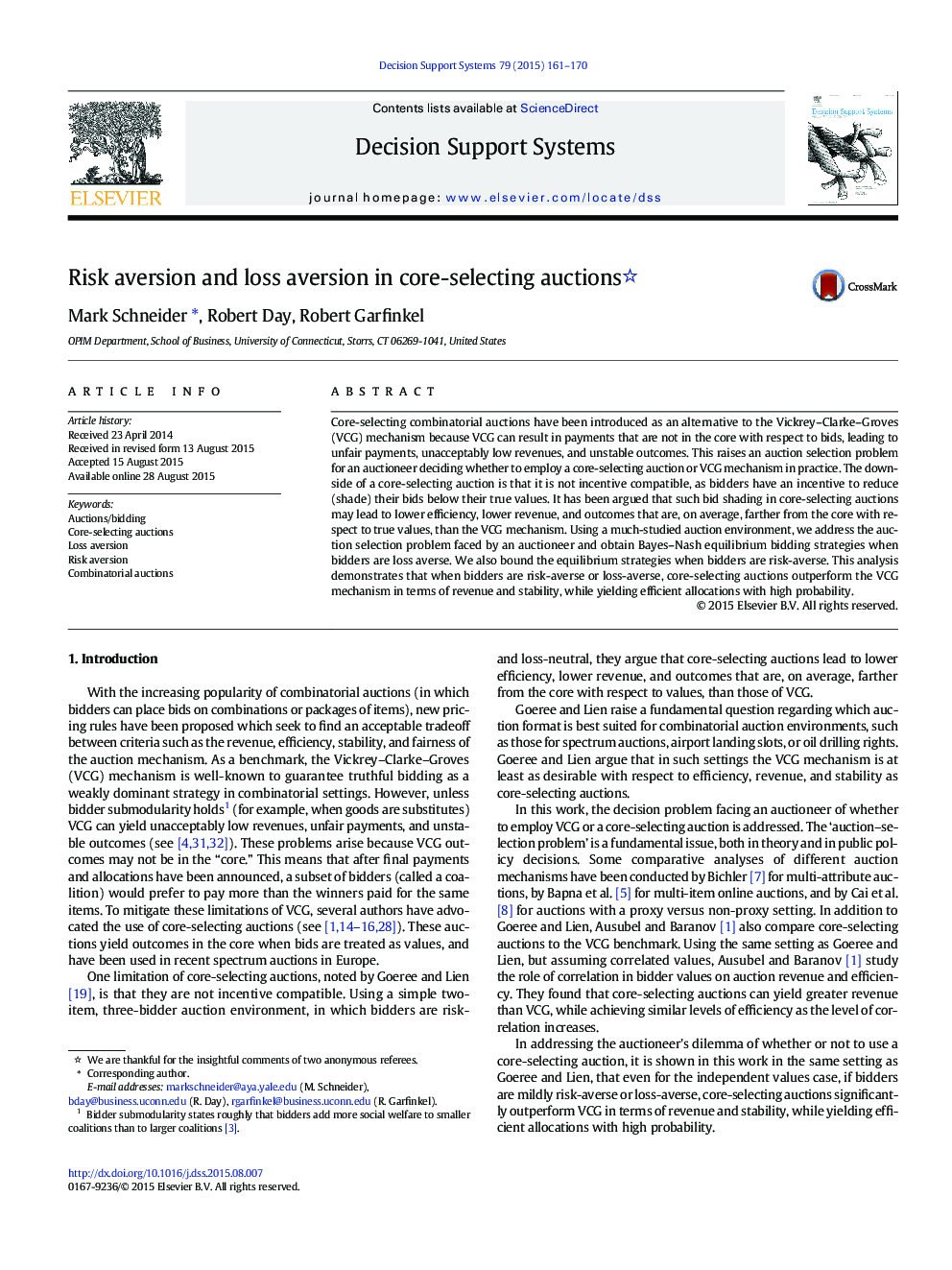| Article ID | Journal | Published Year | Pages | File Type |
|---|---|---|---|---|
| 6948493 | Decision Support Systems | 2015 | 10 Pages |
Abstract
Core-selecting combinatorial auctions have been introduced as an alternative to the Vickrey-Clarke-Groves (VCG) mechanism because VCG can result in payments that are not in the core with respect to bids, leading to unfair payments, unacceptably low revenues, and unstable outcomes. This raises an auction selection problem for an auctioneer deciding whether to employ a core-selecting auction or VCG mechanism in practice. The downside of a core-selecting auction is that it is not incentive compatible, as bidders have an incentive to reduce (shade) their bids below their true values. It has been argued that such bid shading in core-selecting auctions may lead to lower efficiency, lower revenue, and outcomes that are, on average, farther from the core with respect to true values, than the VCG mechanism. Using a much-studied auction environment, we address the auction selection problem faced by an auctioneer and obtain Bayes-Nash equilibrium bidding strategies when bidders are loss averse. We also bound the equilibrium strategies when bidders are risk-averse. This analysis demonstrates that when bidders are risk-averse or loss-averse, core-selecting auctions outperform the VCG mechanism in terms of revenue and stability, while yielding efficient allocations with high probability.
Related Topics
Physical Sciences and Engineering
Computer Science
Information Systems
Authors
Mark Schneider, Robert Day, Robert Garfinkel,
